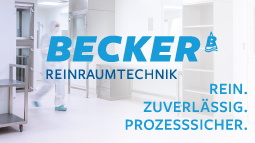- 3D printing
Bioprinting Meets Festivity: 3D Printed Micro-Christmas Tree Decorated with Living Cells
The bioprinting sector has seen rapid growth, with Vital3D leading innovations like their 2 mm tall Christmas tree scaffold, demonstrating advanced 3D-printed tissue scaffolds. This technology promises significant impacts in organ transplantation and redu
In the last few years, the bioprinting sector has experienced rapid growth, marked by significant milestones and innovations. Notable achievements include the successful transplantation of small-scale 3D-printed heart tissues into animals, the creation of 3D-printed kidney models that replicate human renal structure for studying diseases, advancements in 3D-printed liver tissues for drug testing, the development of 3D-printed skin for burn treatments, and progress in 3D-printing cartilage tissue with applications in joint and ear reconstruction.
Innovative approach to bioprinting
Amidst this advancing landscape, Vital3D, which specializes in 3D bioprinting solutions stands out with its unique approach to 3D printing scaffolds for organoid growth and tissue regeneration. The company leverages femtosecond laser-based two-photon polymerization technology to address emerging challenges in the field, such as maximizing organoid size, complexity, and diversity of cell types.
The company’s recent endeavor, a 2 mm tall Christmas tree scaffold, exemplifies its commitment to innovation. This festive creation not only showcases the precision of the FemtoBrush technology but also highlights the potential for complex, functionalized scaffolds that provide ideal environments for cell growth.
Dr. Linas Jonušauskas, Chief Technology Officer at Vital3D Technologies, emphasizes the significance of this development: “Our Christmas tree scaffold, while playful, represents a serious step forward. It’s a clear demonstration of the ability to create structures that support cell growth in more intricate and specialized ways. This rudimentary square scaffold is just the beginning. Our future work involves functionalized biopolymers and arbitrarily shaped 3D structures, pushing organoid research beyond its current limits.”
The future of bioprinting: beyond organoids
Bioprinting holds immense promise beyond the creation of complex organoids. One of the most impactful potential applications is in the field of organ transplantation. By advancing the technology for creating viable, functional organs, bioprinting could revolutionize transplant medicine, offering solutions to organ shortages and compatibility issues.
Furthermore, bioprinting has the potential to significantly reduce animal testing in drug development. Providing more accurate human tissue models, enables more effective drug testing and individualization, leading to safer and more tailored medical treatments.
Dr. Jonušauskas adds, “Bioprinting is not just about creating structures; it’s about creating hope and solutions. From addressing organ transplant needs to reducing reliance on animal testing, the possibilities are vast.”
Vital3D
10224 Vilnius
Lithuania









